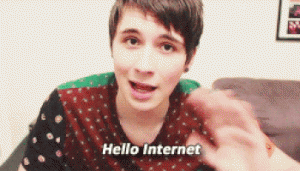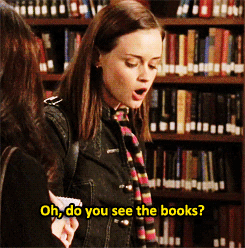So, I mentioned a while ago that we’ve been learning about fantasy. Specifically, one of the things we’ve been learning about is Alice’s Adventures in Wonderland, which we read, watched a movie version of, and eventually had to write an essay on.
My essay focused on the topic of how Lewis Carroll created an imaginary world. There were a few things that I thought really made the world of Wonderland work: the fact that we, the readers, explored Wonderland at the same time as Alice; the mindset and logic of the characters to reflect the childishness of Alice (considering the entire thing was her dream); and how the logic of the settings and scenery had the ability to reflect this as well.
I went through a couple drafts of my essay, and got both peer and parent critique, but this was my final result:
A rabbit hole, a cup of tea, and a pack of playing cards, to most people, are not strange or wondrous items. However, when Lewis Carroll wrote the book Alice’s Adventures in Wonderland, he made all of these things extraordinary, as part of an imaginary world. Carroll draws us into that world by use of an exploratory perspective, a childish logic that draws on existing culture and language, and descriptions of various odd or fantastical settings and situations created from elements of reality.
When the book begins, the protagonist, Alice, is in an ordinary situation: bored and daydreaming by a riverbank. When a rabbit goes by wearing a waistcoat, she thinks that it is “not so very much out of the way” (Carroll, 5), but when the rabbit pulls a watch out of its pocket, she is confused and intrigued, and decides to follow it. She falls down a rabbit hole, which is much deeper than it should be, and full of strange items such as bookshelves. The world she finds herself in when she reaches the bottom of the rabbit hole is one as unfamiliar to her as it is to the reader, and as she explores, questions, and learns about this new world, so do we. Near the beginning of the book, Alice says “curiouser and curiouser”(Carroll, 11); she wonders at the strange things happening around her. Later on, however, she says that “everything’s curious today” (Carroll, 57), suggesting that she has accepted the strangeness of Wonderland, and she continues exploring it, taking the reader along with her. Being able to see Wonderland through the perspective of somebody discovering and exploring it for the first time helps to draw the reader in because they are learning just enough at a time that they keeping asking questions.
Besides the perspective the reader views the world from, Wonderland itself also helps draw the reader in. Carroll applies a childish logic to very everyday culture and language, often using puns and witticisms. Some of the best examples of this come from the tea party that Alice attends with the Mad Hatter, the March Hare, and the dormouse. The hatter personifies time, responding to Alice’s remark that she has to “beat time when (she learns) music” (Carroll, 53) by saying that “He won’t stand beating”. While the phrase “to beat time” does not, of course, refer to physically beating a person, there is a logic behind Carroll’s interpretation. In the same conversation, Alice asks for an explanation of how three children could draw treacle from a well, arguing that they were in the well at the time. The dormouse does not offer an explanation, but simply says, “Of course they were. Well in.” (Carroll, 56). While there is no real logic to what the dormouse is saying, it gives the reader an idea of how the character’s thoughts reflect the logic of the world around them. A similarly alogical logic is applied to how Wonderland looks.
The final way that Carroll draws readers into Wonderland is by using pieces of the real world to create fantasy settings and situations. At one point, Alice stumbles across some painters painting a rose bush, and Carroll says, “the roses growing were white, but there were three gardeners… busily painting it red.” While nothing about this is impossible (white roses aren’t imaginary, and could technically be painted red), the way the scene is composed draws upon this same childish logic of taking things at face value: white roses plus red paint equals red roses. In the first chapter, when Alice is falling down the rabbit hole, she notices that the walls are “filled with cupboards and bookshelves, (and) maps and pictures hung upon pegs” (Carroll, 6). While, once again, this could technically happen, it makes no sense. This blend of reality and fantasy elements not only helps to draw the reader in, but also makes the story stay with them longer, as things in real life may begin to remind them of the story.
In conclusion, the techniques Carroll exhibits of drawing someone into a fantasy world by giving them the feeling they’re exploring it, using a recognizable logic in an unusual way, and including elements of the real world in the fantasy one all help draw readers in to the world of Wonderland. These techniques are part of the reason that Alice’s Adventures in Wonderland, and Wonderland itself, have left such a legacy on the world, one that has lasted over a century and a half, and is still going strong.
While I think I could have gone more in depth with my analysis, and I actually would have liked to look at Through the Looking Glass, and What Alice Found There as well, seeing as it revisits the world, I think that overall, I was able to make the points I wanted to make with this essay. The world Carroll created with Wonderland is an interesting and well crafted portrayal of a child’s mind, and both Alice in Wonderland and Through Looking Glass are books that I enjoyed reading.
Toodles!


